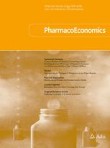|
Αρχειοθήκη ιστολογίου
-
►
2023
(269)
- ► Φεβρουαρίου (133)
- ► Ιανουαρίου (136)
-
►
2022
(2046)
- ► Δεκεμβρίου (165)
- ► Σεπτεμβρίου (161)
- ► Φεβρουαρίου (165)
-
►
2021
(3028)
- ► Δεκεμβρίου (135)
- ► Σεπτεμβρίου (182)
- ► Φεβρουαρίου (324)
-
▼
2020
(1051)
- ► Δεκεμβρίου (292)
-
▼
Νοεμβρίου
(374)
-
▼
Νοε 29
(17)
- Quantification of DNA through the NanoDrop Spectro...
- Biochemical Constituents of Phaleria macrocarpa (L...
- The Rise of Transradial Artery Access for Percutan...
- Increased Frequencies of Switched Memory B Cells a...
- The Importance of the Deep Deltoid Ligament Repair...
- Matcha Improves Metabolic Imbalance-Induced Cognit...
- Prophylaxis of Pain and Fractures within Feet in t...
- Glucose Required for Tissue Formation and Its Effe...
- Effects of SMILE Surgery on Intraocular Pressure, ...
- Urgent need to develop evidence-based COVID-19 rec...
- Health State Utilities of Patients with Heart Fail...
- Effect of manual aspiration thrombectomy using lar...
- Lost in Transition: Health Care Experiences of Adu...
- Retrospective Assessment of Risk Factors for Head ...
- Rapid-Cycle Evaluation in an Early Intervention Pr...
- Prediction of Epidemics Trend of COVID-19 in Bangl...
- Hyoscine butylbromide versus acetaminophen for non...
-
▼
Νοε 29
(17)
- ► Σεπτεμβρίου (60)
- ► Φεβρουαρίου (28)
-
►
2019
(2277)
- ► Δεκεμβρίου (18)
- ► Σεπτεμβρίου (54)
- ► Φεβρουαρίου (89)
-
►
2018
(26280)
- ► Δεκεμβρίου (189)
- ► Φεβρουαρίου (6130)
- ► Ιανουαρίου (7050)
-
►
2017
(33948)
- ► Δεκεμβρίου (6715)
- ► Σεπτεμβρίου (6470)
-
►
2016
(4179)
- ► Σεπτεμβρίου (638)
- ► Φεβρουαρίου (526)
- ► Ιανουαρίου (517)
Κυριακή 29 Νοεμβρίου 2020
Quantification of DNA through the NanoDrop Spectrophotometer: Methodological Validation Using Standard Reference Material and Sprague Dawley Rat and Human DNA
Biochemical Constituents of Phaleria macrocarpa (Leaf) Methanolic Extract Inhibit ROS Production in SH-SY5Y Cells Model
|
The Rise of Transradial Artery Access for Percutaneous Coronary Intervention in Patients with Acute Coronary Syndromes in Australia
|
Increased Frequencies of Switched Memory B Cells and Plasmablasts in Peripheral Blood from Patients with ANCA-Associated Vasculitis
|
The Importance of the Deep Deltoid Ligament Repair in Treating Supination-External Rotation Stage IV Ankle Fracture: A Comparative Retrospective Cohort Study
|
Matcha Improves Metabolic Imbalance-Induced Cognitive Dysfunction
|
Prophylaxis of Pain and Fractures within Feet in the Course of Osteoporosis: The Issue of Diagnosing
|
Glucose Required for Tissue Formation and Its Effects on Cane Yield, Recoverable Sugar, and Sugar Yield
|
Effects of SMILE Surgery on Intraocular Pressure, Central Corneal Thickness, Axial Length, Peripapillary Retinal Nerve Fiber Layer, and Macular Ganglion Cell Complex Thickness
|
Urgent need to develop evidence-based COVID-19 recommendations for primary schools
|
Health State Utilities of Patients with Heart Failure: A Systematic Literature Review
|
Effect of manual aspiration thrombectomy using large-bore aspiration catheter for acute basilar artery occlusion: comparison with a stent retriever system
|











